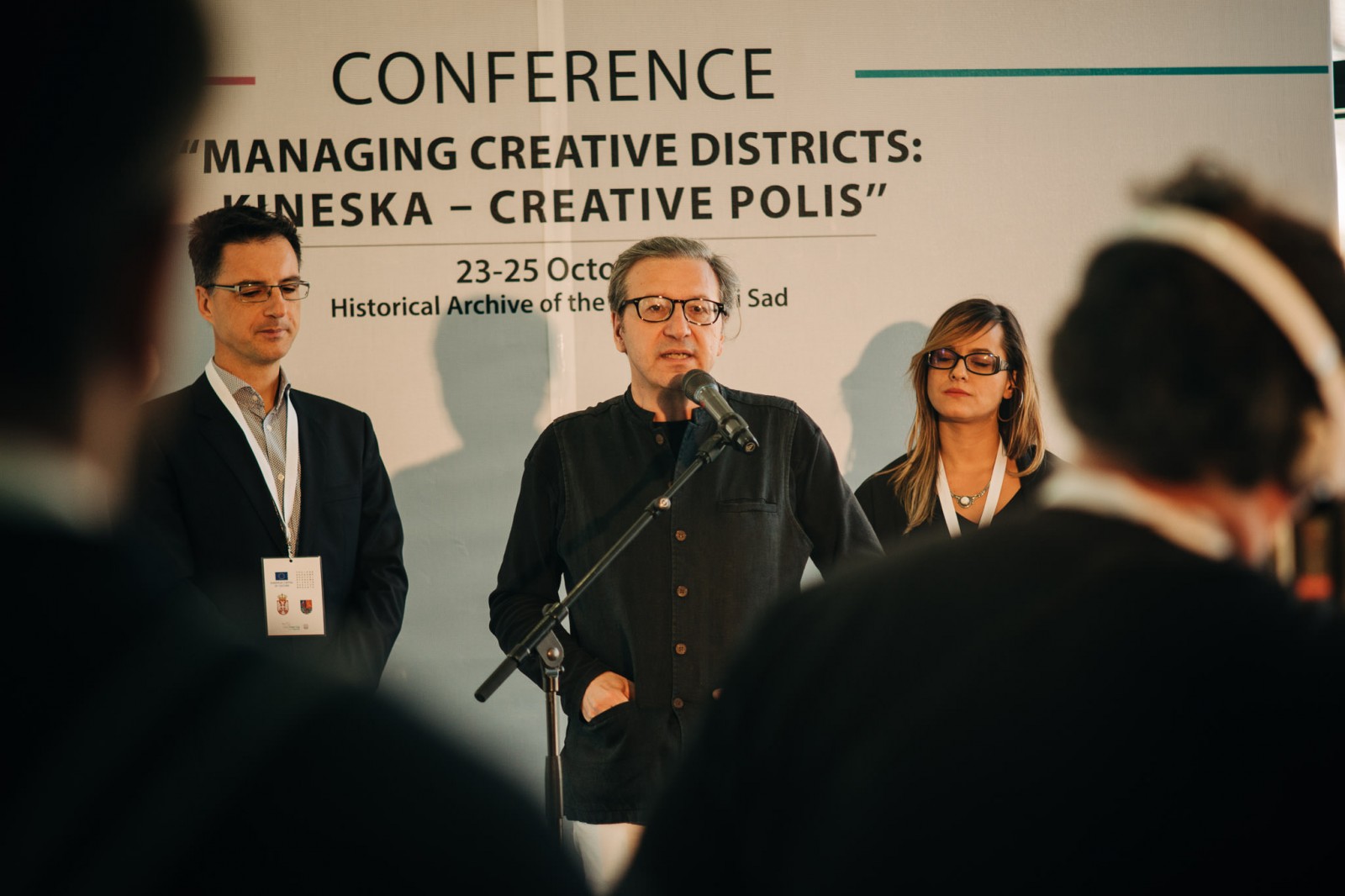The ‘Novi Sad 2021’ Foundation organised the ‘Management of Creative Districts: Kineska – Creative Polis’ conference in the Historical Archives of the City of Novi Sad from 23 until 25 October. During the three-day conference, 20 experts from Serbia and abroad, together with local representatives of cultural institutions, posed questions related to finding the best model for management of creative polis and process of creating guidelines for drafting the official document as the starting point of managing ‘Kineska’.
‘Kineska’ is envisaged as the Creative Centre of Novi Sad within the ‘Novi Sad 2021 – European Capital of Culture’ project, were young people can express their creativity, making it the authentic new space for young people and presenting the innovative bond between culture and creative entrepreneurship.
‘Every project of the ‘Novi Sad 2021’ Foundation, as well as the work on ‘Kineska’ creative polis, is based on a vision of the Foundation, consisting of people, processes, programmes and spaces. The beginning of new. Now!’, said Mr Nemanja Milenković, CEO of the Foundation, during the round table within the conference. He reminded that ‘Kineska’ should be attractive public space opened for a dialogue, space by which capacities of local scene are built, space that fosters old crafts but, above all, recognises the importance of all spheres of cultural and creative industries. ‘Through the meetings with experts, we had a chance to learn from their experience and examples of practice, which will help us get as better results as possible with fewer mistakes’, added Mr Milenković.
The conference held from 23 until 25 October in Novi Sad, gathered relevant speakers in the field of organisation and management of creative districts from the world, region and Serbia, with the focus on examples of good practice from the cities similar to Novi Sad.
Dr Srđan Jovanović Weiss, architect and professor, ‘The City College of New York-Bernard & Anne Spitzer School of Architecter’ (New York), one of the main speakers at the conference, stressed that there are rare examples of practice where the culture of dialogue is in the focus, which is the case with the ‘Kineska – Creative Polis’ project. He added that he worked with students on the ‘In Visible City’ project at the City College of New York during the whole semester with the aim to bridge physical borders by connecting Novi Sad and New York and present models for development of cultural heritage and future creative polis ‘Kineska’ by researching new cultural infrastructure of the city through solution ideas.
Ms Nina Rappaport-Hall from the Vertical Urban Factory, Yale School of Architecture (New York) shared her vision with the audience that cultural centres, as well as ‘Kineska’, should be designed in accordance with values and way of life we want to implement within them, foster and promote.
Ms Katarina Živanović, director of ‘Kulturafabrik’ from Košice (Slovakia) promoted her vision for ‘Kineska’, where this creative polis should support co-existence, unlike production, while Ms Tijana Palkovljević Bugarski, Chairperson of the Steering Committee of the ‘Novi Sad 2021 -European Capital of Culture’ foundation and Manager of the Matica Srpska Gallery, sees creative polis as the space for non-institutional culture, culture that is new and available.
Participants of the conference concluded: the European Capital of Culture title presents ideal environment for Novi Sad to show its identity and cultural character through such projects. Creative polis is perceived as the initiator of ‘cultural revolution’ that should revive after Novi Sad in other cities in Serbia. In that manner, new ‘cultural movement’ should start.
Cabinet of the Prime Minister Ana Brnabić recognised the importance of this project that will be implemented with the support of the Government of Serbia. During the visit to Novi Sad commemorating the gala opening of the Svilara cultural station, Prime Minister visited current works on building the ‘Kineska’ creative polis, while the future prospect of creative polis was presented through the digital exhibition and VR presentation within the ‘Management of Creative Districts: Kineska – Creative Polis’ conference in the Historical Archives of the City of Novi Sad. During the visit, Ms Ana Brnabić said that ‘Kineska’ and Svilara, new cultural station of Novi Sad, are the examples of new platform of good practice of revitalising devastated industrial areas thanks to creative industries, and that fourth industrial revolution begins with Novi Sad, through the synergy of culture, creative industries, technologies, festivals, virtual reality, animations.
What the challenges in management of creative polises are, review of world practices, what the good models of management for Kineska creative polis are – these are some of the topics that were initiated during the three-day conference. Furthermore, participants talked and shared experience about spaces, property rights, structural and creative aspects of managing the creative polis as important support hub for cultural creativity and development of creative industries of Novi Sad through presentation of examples and experience with the focus on Europe and European Capitals of Culture.



